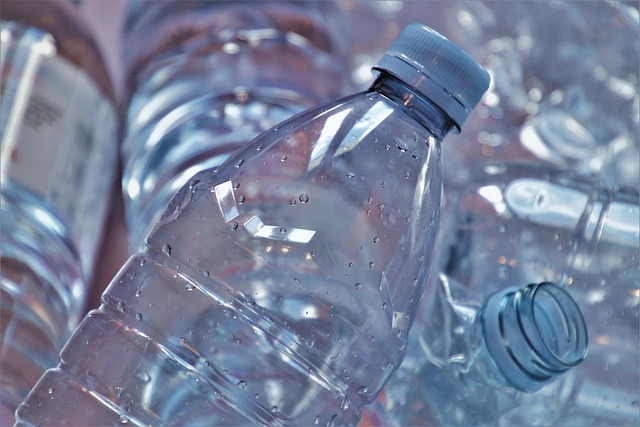Sustainable choices in packaging and formulas to lower waste impact
Sustainable choices in packaging and formulas can reduce waste while preserving product performance. By prioritizing refillable containers, recyclable materials, and streamlined ingredient lists, consumers and brands can minimize environmental impact across skincare and haircare routines without sacrificing effectiveness.

Sustainable packaging and thoughtful formulas can significantly lower the waste impact of skin and hair care products while maintaining efficacy. Choosing refill systems, recyclable materials, and concentrated formats reduces single-use packaging and transportation emissions. Equally important are ingredient selections that support skin and scalp health—balancing hydration, active delivery, and the microbiome—so products remain gentle and effective without excess components.
How does packaging affect complexion safety?
Packaging plays a direct role in product safety and the condition of your complexion. Airtight, opaque containers help preserve sensitive actives like peptides and vitamin formulations that target fine lines or uneven tone; damaged or poorly sealed packaging can degrade these components and reduce effectiveness. Minimalist packaging that limits coatings and composite layers eases recycling while still protecting serums and lotion textures. For consumers focused on complexion, look for clear labeling on materials, barrier protection for light- and oxygen-sensitive ingredients, and refill options to cut single-use waste.
Scalpcare: sustainable packaging choices
Scalpcare products face unique formulation and packaging needs because of frequent use and larger containers. Refillable shampoo and conditioner stations, concentrated pods, and bulk dispensers reduce plastic output and shipping weight. For bottles, mono-material plastics or aluminum bottles with simple caps are easier to recycle than mixed materials. Powder-to-liquid cleansers and bars for hair can also lower shipping emissions and packaging volume. When selecting scalpcare items in your area, prioritize transparent recycling instructions and brands that accept or support take-back programs.
Hydration and the microbiome: formula design
Effective hydration depends on both humectants and barrier-restoring lipids that respect the skin’s microbiome. Formulas emphasizing ceramides, gentle emollients, and balanced humectants can maintain moisture without unnecessary preservatives or overuse of emulsifiers that disrupt microbial balance. Streamlined ingredient lists reduce waste associated with complex testing and lower the environmental cost of sourcing exotic actives. Look for concentrated hydrating formulations or multi-use products that combine hydration and protection to cut packaging and product volume.
Serums, peptides, ceramides: eco-friendly options
Serums and actives such as peptides and ceramides are often packaged to protect potency. Sustainable choices include airless pump systems that extend shelf life and reduce preservative needs, or smaller recyclable glass vials paired with refill pouches. Some brands offer peptide-rich concentrates in highly stable formats that allow lower dosing and longer-lasting containers. Selecting formulations where ceramides are presented in stable, skin-compatible forms reduces the need for heavy preservatives and enables packaging that’s easier to recycle.
Cleansing, exfoliation, oils, sunscreen: greener picks
Cleansers and exfoliants present clear opportunities to reduce waste: bar cleansers, refill pouches, and biodegradable exfoliating agents lower both plastic and micro-debris impact. Oils that come in recyclable glass bottles or bulk containers can replace single-use sachets, while sunscreens in compact, concentrated sticks or mineral-based formulations with recyclable tubes reduce product volume and application waste. Check ingredient transparency for microplastic-free exfoliants and biodegradable surfactants when choosing products for weekly exfoliation or daily cleansing.
Creating a sustainable routine
A sustainable routine balances fewer, multifunctional products with mindful packaging choices. Combine serums with peptides for targeted needs, layer ceramides or oils for barrier support, and simplify cleansing to preserve microbiome balance. Refillable dispensers for daily rinses, concentrated serums, and multi-use sunscreens reduce packaging frequency. Track expiration and store products to extend life, and prioritize brands with clear recycling or take-back systems to lower end-of-life waste. Small routine adjustments accumulate into measurable reductions in materials and emissions.
This article is for informational purposes only and should not be considered medical advice. Please consult a qualified healthcare professional for personalized guidance and treatment.
Sustainable packaging and formulation choices require evaluating both product efficacy and environmental impact. By favoring refillable systems, recyclable materials, concentrated formats, and microbiome-friendly ingredients such as ceramides and balanced humectants, consumers and brands can reduce waste while supporting healthy complexion and scalpcare. Thoughtful product selection and a simplified routine help lower the lifecycle footprint of skin and hair care without compromising results.





